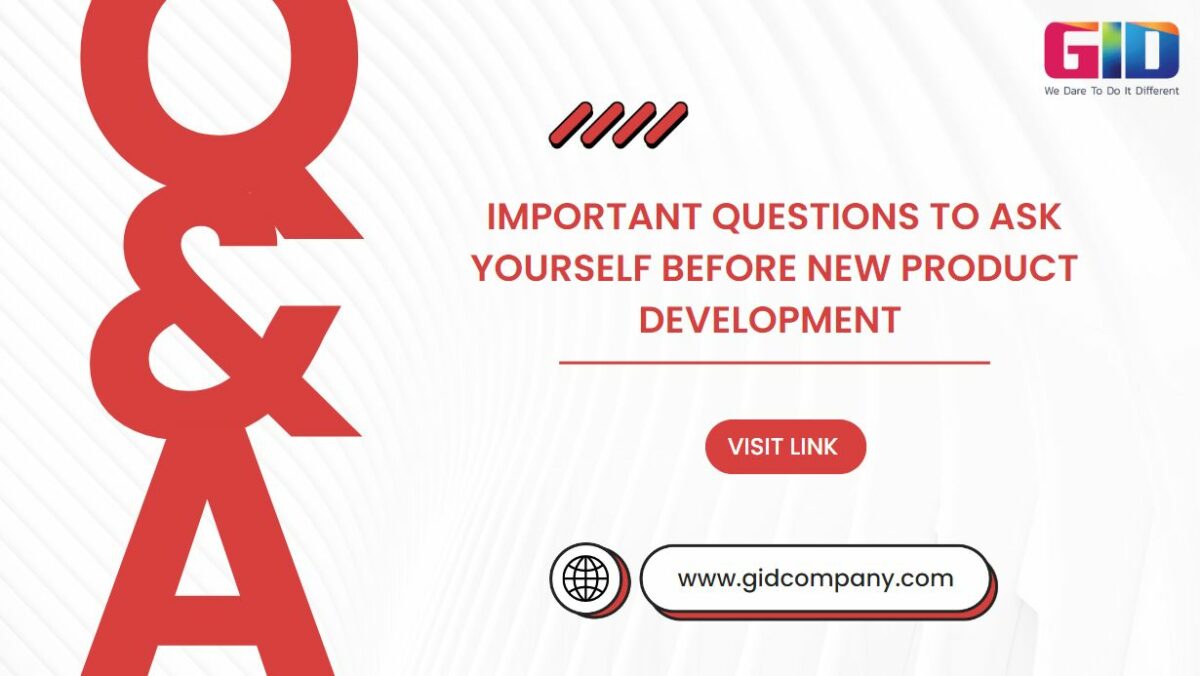We are GID, and we are the best product development company in California. We understand that developing a new product for your end users is not an easy-going task. New product development requires hundreds of serious considerations to ensure your product is entering the market in a timely manner and is loved by your targeted audiences. Thus, we are here with the set of questions that you need to ask yourself before your start the process of new product development.
Developing a new product can be an exciting prospect for any business. It presents an opportunity to expand your product line, attract new customers, and increase revenue. However, before embarking on a new product development project, it’s essential to ask yourself some important questions. These questions will help you determine whether the new product is a good fit for your business and whether it will be successful in the market. In this blog post, we’ll explore some of the key questions to ask before beginning new product development.
What is the market demand for this product?
The first question you need to ask is whether there is a market demand for the product you’re planning to develop. You can conduct market research to determine the size of the market, the potential customer base, and the competition. It’s essential to have a clear understanding of the market demand for the product to ensure that there is a need for it. You can take the help of a product development company like GID or contact the experts like Jim at +1714-323-1052 for help and guidance.
What is the unique value proposition of the product?
Your new product should offer something unique to the market. It’s essential to identify the product’s unique value proposition, i.e., what sets it apart from the competition. This can be in the form of a unique feature, better quality, or a lower price point. Having a clear value proposition will help you to market the product effectively.
Does it align with your brand and business strategy?
Before launching a new product, you need to consider whether it aligns with your brand and business strategy. Your new product should fit in with your existing product line and complement your brand image. Additionally, it should align with your business strategy and support your long-term goals.
What is the cost of development and production?
New product development can be expensive, and you need to consider the cost of development and production before committing to the project. This includes the cost of research and development, manufacturing, and marketing. You need to determine whether the potential revenue from the product will cover the costs and generate a profit. If you are not sure about how to bifurcate the development cost of the product, then call Jim today. Jim is the right person to help you analyze the overall cost of developing a new product – from ideation to marketing. For a free telephonic consultation with Jim, please dial +1714-323-1052.
How will you market the product?
Marketing is an essential aspect of any new product launch. You need to consider how you will market the product and reach your target audience. This includes developing a marketing strategy, identifying the most effective channels, and determining your budget for marketing activities.
What are the potential risks and challenges?
Finally, you need to consider the potential risks and challenges associated with the new product development project. This includes the risk of product failure, market competition, and changes in customer demand. You need to develop contingency plans to address these risks and ensure that you can overcome any challenges that arise.
Contact GID Company
In conclusion, developing a new product can be a lucrative opportunity for any business. However, it’s essential to ask yourself some important questions before committing to the project. By considering the market demand, unique value proposition, alignment with your brand and business strategy, cost, marketing strategy, and potential risks and challenges, you can ensure that your new product development project is successful.
If you have a product idea that can earn you a name and fame, then get in touch with GID Company today. Jim and his team of product development experts can help you with everything related to new product development. You can have a look at their product development portfolio to better understand their expertise over in domain. For a free telephonic consultation with Jim, please call +1714-323-1052 or use the contact us form on the website.
You can like our Facebook page and follow us on Twitter as well.




